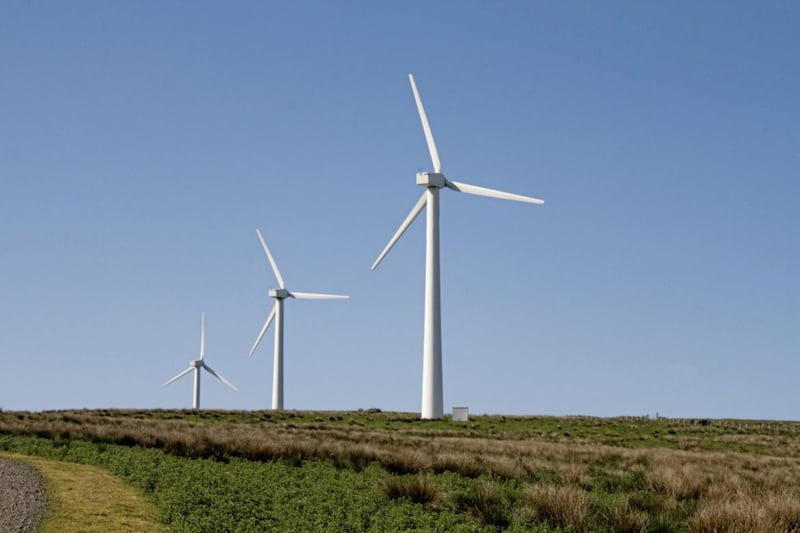MORE than half of all the electricity consumed in the north last year was generated from renewable sources, new data shows.
But generation from wind and other renewable sources will need to be doubled in order to hit Stormont’s target of 80 per cent by 2030, a leading industry voice has said.
The latest official analysis found 51 per cent of the electricity used here in 2022 was derived from locally based renewable generators, mostly from wind turbines.
That was a 9.7 percentage point increase on the previous 12 months. The Northern Ireland Statistics and Research Agency (Nisra) said it was just shy of the record (51.6 per cent) for a rolling 12-month period.
The sharp year-on-year increase was largely the result of a dip in the consumption of renewable electricity through the second half of 2020 and toward the end of 2021.
Last year’s performance was boosted by a new record setting month for the industry.
In February 2022, 76.5 per cent of electricity consumption in the north was generated from renewable sources, making it the highest individual monthly proportion on record.
Former Green Party leader Steven Agnew is now director of RenewableNI, which represents companies involved in the industry here.
He said while hitting 51 per cent was “fantastic”, much more will be needed to close in on the new target.
“We need to more than double the generation to achieve the 80 per cent target by 2030,” he said.
“For the last four years Northern Ireland has stalled investment in the sector.
“We have achieved 1.7GW capacity – we need an additional 2.5GW, but only 75MW a year of new generation has been connected.”
Northern Ireland’s current energy strategy was launched by the former economy minister Gordon Lyons in December 2021.
It initially established a renewable electricity consumption target of 70 per cent by 2030. But that was increased to 80 per cent by 2030 by the Climate Change (Northern Ireland) Act 2022.
In order to hit that target, the Department for the Economy has looked to offshore wind generation, with the plan of delivering an extra 1GW, which would roughly be enough to power one million homes.
A consultation on a new draft offshore renewable energy action plan for Stormont closes next week (March 16).
“The legislative environment has not created optimum conditions for this much needed investment during this time so we are relying heavily on outputs from established renewable sources which have been on stream for some years,” continued Steven Agnew.
“We face a new opportunity to position Northern Ireland at the leading edge of floating wind turbine generated electricity.
“However, by 2030 the onshore wind and solar industry will still be providing over 85 per cent of the electricity generation Northern Ireland needs.
“Last year NI consumers avoided paying £500 million to import gas last year because electricity provided by wind farms,” he said.
“The industry will generate £5bn for the economy, create thousands of new jobs and provide energy security.
“Politicians need to support the renewable electricity industry to improve the climate and economy.”








